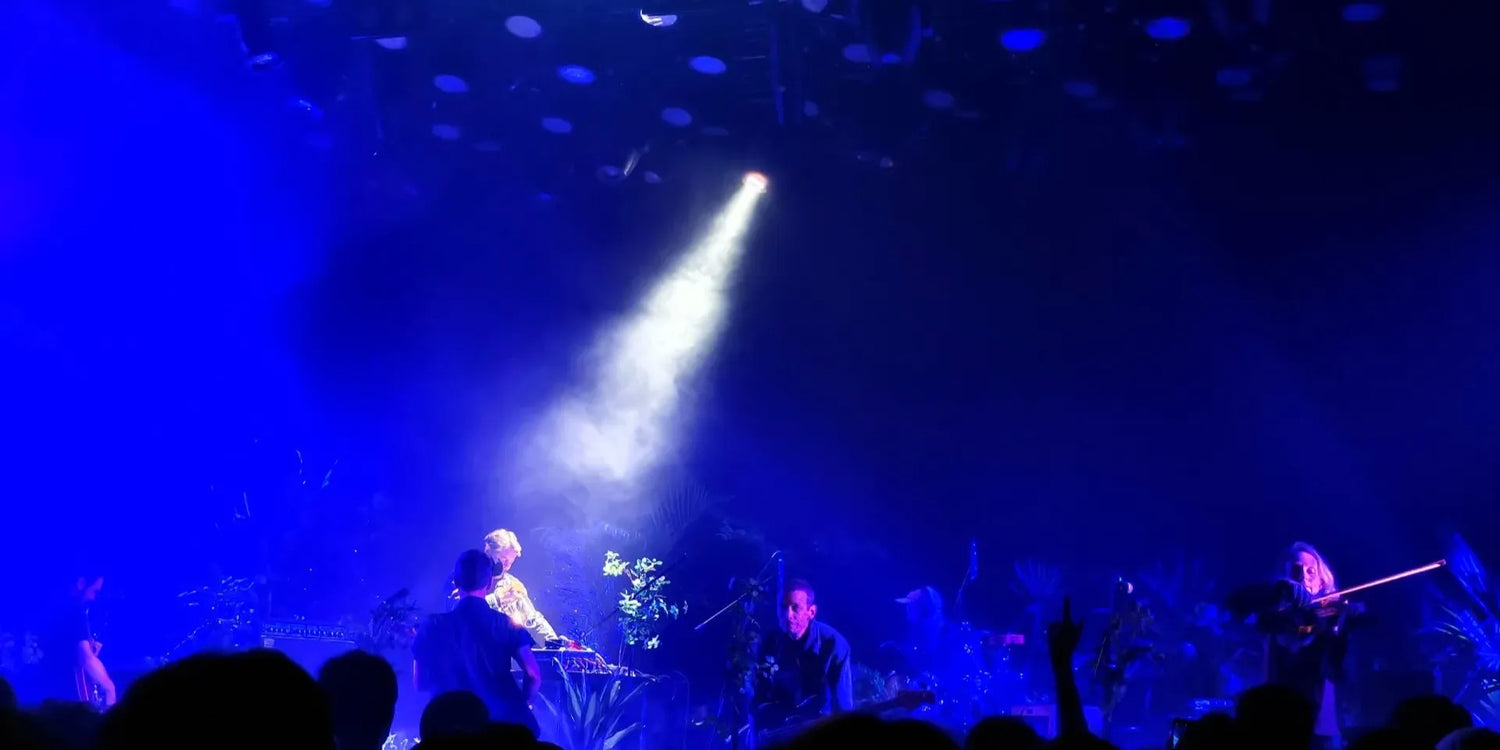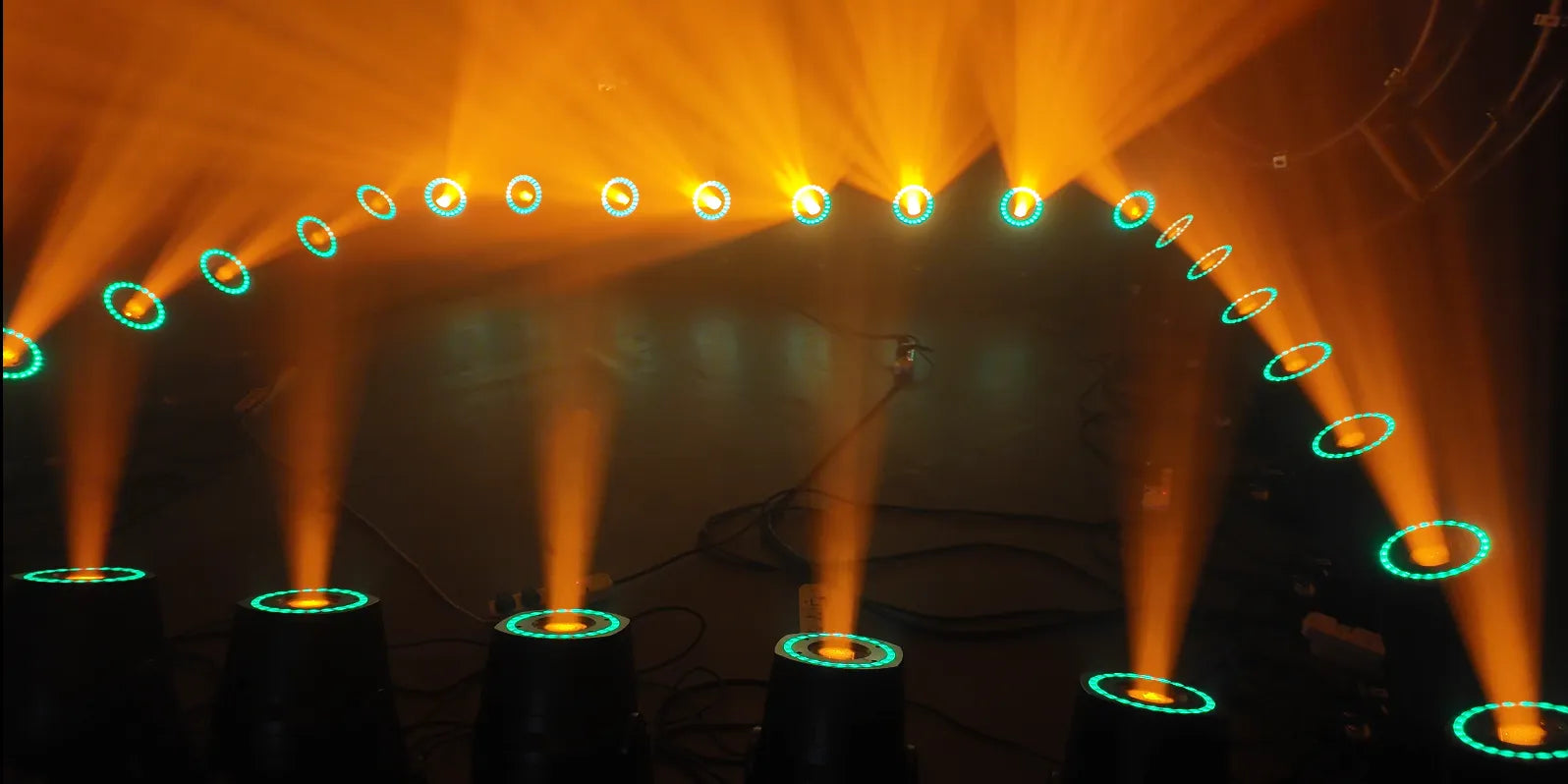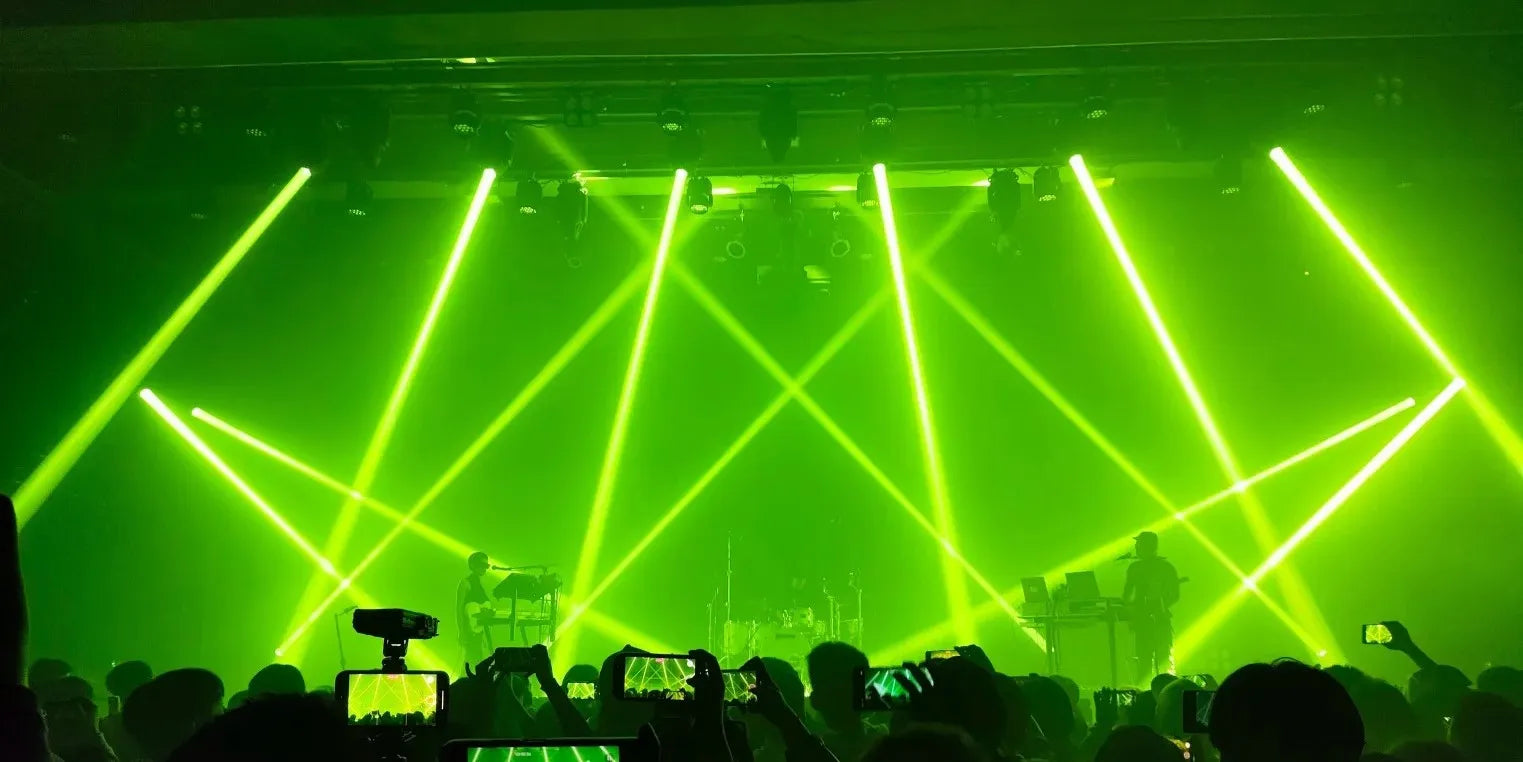Stage lighting equipment safety is directly tied to the smooth progress of performances and the protection of audience and crew. This article analyzes common safety risks—such as electrical fires, falling fixtures, electric shocks, and control failures—and provides practical prevention strategies to reduce risks and ensure safe stage operation.
Introduction
Stage lighting is essential for performances, but improper use or maintenance can lead to severe safety issues. Electrical faults, unstable installations, or signal failures may cause not only technical interruptions but also serious accidents. Addressing these risks through proper design, inspection, and operational standards is critical for safe stage production.

Common Safety Risks
(1) Electrical Fires
- Aged wiring or overloaded circuits can cause overheating and ignition.
- High-temperature fixtures placed near flammable materials increase fire risk.
- Poor installation without proper clearance or heat insulation can also lead to accidents.
(2) Equipment Falling
- Using improper clamps, mounts, or ignoring installation instructions can result in unstable fixtures.
- Over time, wear and tear may loosen components, increasing the likelihood of equipment falling from height.
(3) Electric Shocks
- Damaged insulation, loose connections, or poor grounding are major hazards.
- Untrained operators handling power and control systems increase the risk of injury.
(4) System Failures and Uncontrolled Fixtures
- Power outages, signal interruption, or console crashes can cause sudden blackouts.
- Lack of redundant systems may lead to performance disruptions.
Prevention Strategies
(1) Fire Prevention
- Conduct regular inspections of wiring, connectors, and power sources.
- Maintain at least 50 cm clearance between fixtures and flammable objects.
- Use fire-retardant conduits and quality ballasts to prevent overheating.
- Limit the number of fixtures per circuit and use overload protection devices.
(2) Preventing Falls
- Use certified mounting hardware and safety cables.
- Follow installation manuals strictly.
- Regularly check and replace worn components.
(3) Preventing Electric Shocks
- Regularly test grounding and insulation.
- Restrict equipment access to trained personnel only.
- Install RCD (residual current device) protection.
(4) System Stability
- Conduct signal stability and control tests before each performance.
- Use dual power supplies or hot backups to avoid system failure.
- Employ shielded signal cables and maintain clean power distribution.
Practical Recommendations
Partnering with reliable lighting brands can significantly reduce equipment risks. Manufacturers like Betopper (https://betopperdj.com/) offer lighting solutions designed with strict safety standards, ensuring both performance quality and operational security.
In addition, production teams should:
- Develop a scheduled maintenance plan.
- Replace worn parts proactively.
- Implement clear operating procedures and safety training for staff.
Conclusion
Stage lighting safety is not optional—it’s the foundation of every successful performance. Identifying risks such as electrical fires, falls, electric shocks, and control failures allows teams to implement proactive prevention strategies.
Combining technical safety measures with professional-grade equipment ensures smooth, reliable, and safe shows. Working with trusted lighting suppliers like Betopper can help minimize risks while achieving outstanding stage effects.




Hinterlasse einen Kommentar
Alle Kommentare werden vor der Veröffentlichung geprüft.
Diese Website ist durch hCaptcha geschützt und es gelten die allgemeinen Geschäftsbedingungen und Datenschutzbestimmungen von hCaptcha.